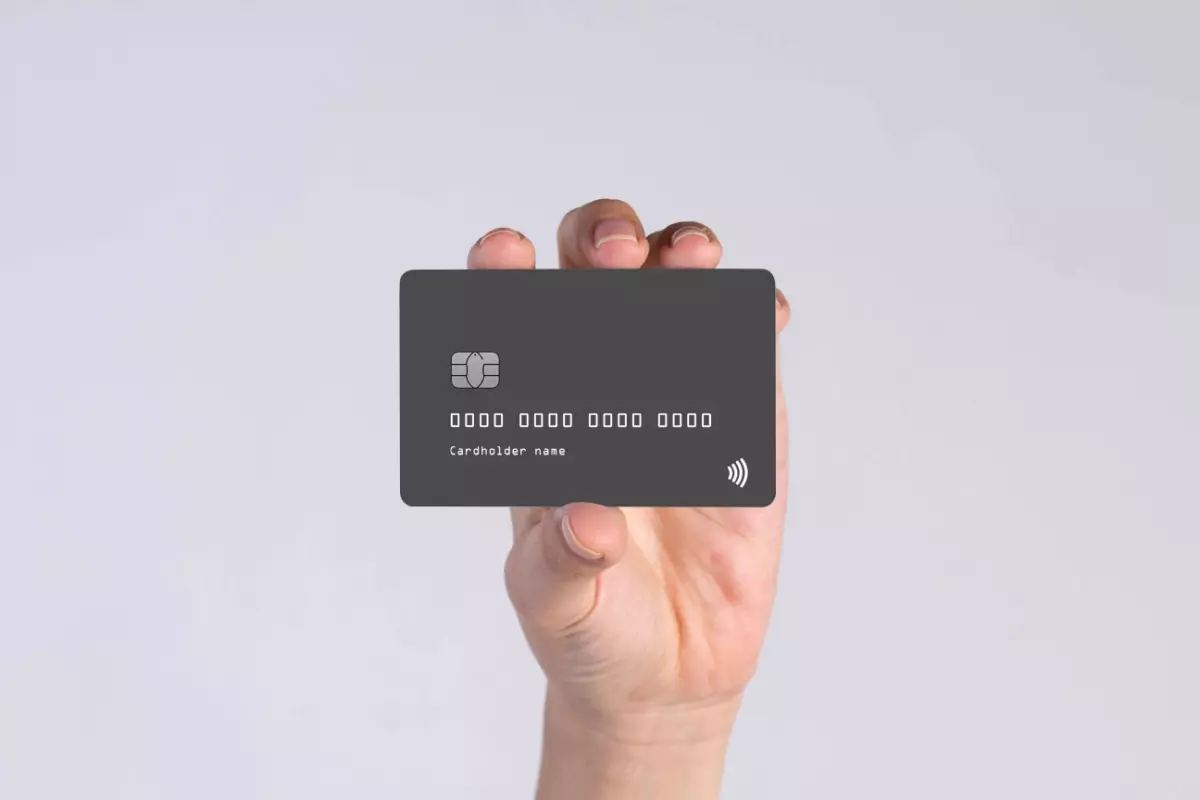Credit Card Size and Dimensions
Have you ever thought why all credit cards fit so perfectly in our wallets? This is not just pure coincidence. Credit card size and dimensions are the result of careful planning and international standards set by the International Organization for Standardization (ISO) to make sure they are durable and reliable.
Want to learn more about the details behind the credit cards you carry every day? Continue reading this blog!
What Are the Dimensions of a Credit Card?
| Dimension | Measurement |
| Length | 85.60 mm |
| Width | 53.98 mm |
| Thickness | 0.76 mm |
| Corner Radius | 3.18 mm |
What Are Credit Cards Made Out Of?
Most credit cards in the market are made from PVC, which stands for polyvinyl chloride. This is a type of plastic that is durable, flexible, and resistant to water and other liquids. The reason why credit card manufacturers choose this type of plastic is because it can handle being bent, shoved into wallets, and used over and over without breaking apart.

Other types of credit cards are also made of metal or carbon fiber, like the American Express Platinum Card. These materials increase the cards’ durability and give them a premium, more sophisticated feel with their sleek, shiny appearance and heavier weight.
Other than ensuring the longevity of the card, these types of cards allow cardholders to show off a bit of status as they are associated with premium accounts. Some of them also use these premium cards strategically to maximize their credit card points.
How Thick Is a Credit Card?
Credit card issuers carefully regulate the thickness of their cards to ensure they fit universally in card readers and ATMs. The standard size of most credit cards is 0.03 inches (0.76 millimeters) thick. This isn’t just a random number. It is part of the ISO/IEC 7810 ID-1 internal standard. This standard guarantees that all credit card dimensions are compatible and uniform.
Premium cards made of materials other than PVC can vary in thickness a little. For instance, some metal cards can be slightly thicker, around 0.033 inches (0.84 millimeters). Despite these minor differences in thickness, all cards are designed to work seamlessly across platforms like ATMs and card readers.
Credit Card Weight
Most standard credit cards are designed to be lightweight and easy to carry and handle. For example, a typical PVC credit card weighs around 0.17 ounces (5 grams).
Conversely, metal cards are heavier because of the materials used to make them. Depending on the type of metal, a metal credit card can weigh anywhere from 0.42 to 0.99 ounces (12 to 28 grams).
Nonetheless, both types of credit cards are designed to fit seamlessly into our wallets, especially for those who carry multiple credit cards in their wallets to earn bonuses, also known as card churning.
Parts of a Credit Card
When you take a closer look at your credit card, you will notice that it is made of different parts. Let’s break down its key components:
- Chip: The Europay, Mastercard, and Visa (EMV) chip is a small, square metallic chip embedded in the front of the card. It provides enhanced security by encrypting transaction data, making it difficult for fraudsters to clone your card.
- Magnetic Strip: This strip is located on the back of the card. It stores your card information. It acts as a reliable backup in case the chip doesn’t work, allowing swipe transactions.
- Card Number: The 16-digit number on the front of the card is used to identify your account for transactions. Each card has a unique sequence of numbers.
- Cardholder Name: Your name is printed below the card number. It shows who the authorized user of the card is.
- Expiration Date: This indicates how long your card is valid, usually shown as a month and year.
- Security Code (CVV): This is the three or four-digit code on the back of the card. It adds an extra layer of security for online and phone transactions.
- Signature Strip: Found on the back, this is where you sign to authorize transactions, giving merchants an extra way to verify your identity.
Font Size of Credit Card Numbers
The font size of credit card numbers is also standardized. This is done to make sure they are easy to read and hard to tamper with. Typically, these numbers are printed in sizes ranging from 16 to 18 points. This size strikes a good balance as it is large enough to be easily read while being small enough to fit neatly on the card.

Can All Credit Cards Be the Same Size?
All credit card companies must comply with the standard credit card size. As per the ISO/IEC 7810 ID-1, all credit cards must be 3.375 inches wide by 2.125 inches high. These standards make sure that cards can be used globally, fitting into ATMs, card readers, and wallets without any issues.
Sum Up
It’s fascinating to realize how much precision goes into something we use every day without a second thought. Credit cards are the result of careful design engineering. From the materials to the precise credit card dimensions, every detail is intended to make sure that we can manage our finances no matter where we are in the world.
Credit Card Size: FAQ
Let’s cover some more interesting facts about credit cards.
Why Are All Credit Cards the Same Size?
The first major reason why credit cards are all the same size is that the hardware that reads them expects them to be that way. Think about it: if a credit card was any thicker, it might not be suitable. The other reason is that our wallets and purses have designated spots for credit cards. They need to be able to fit into those spots.
Why Do Credit Cards Have Raised Numbers?
The raised numbers, also referred to as embossing, on credit cards were originally made for mechanical processing. Until the late 1990s, machines would make an imprint of the card details on a transaction slip.
But these raised numbers no longer have a functional purpose. When electronic processing became the norm in the 2000s, credit card issuers continued to manufacture embossed cards as tradition and tactile identification.
Are There Eco-Friendly Credit Cards?
Yes, many issuers are now offering eco-friendly credit cards. These cards are either made from recycled plastics or biodegradable materials.
Some common examples include the Sunrise Banks Max Cash Preferred Card and the Amalgamated Bank Maximum Rewards World Mastercard. These cards help reduce environmental impact without compromising durability and functionality.
What Are Virtual Credit Cards? How Do They Differ in Terms of Credit Card Size and Dimensions?
Virtual credit cards are digital versions of physical cards. This means that they don’t have a physical form, so size and dimensions don’t apply here. They function the same as regular cards for online transactions. In addition, they provide added security features like temporary card numbers.
How Do Contactless Credit Cards Work? Are They the Same Credit Card Size?
Contactless credit cards use Near Field Communication (NFC) technology, allowing cardholders to pay by simply tapping the card on a reader. They are the same size as standard credit cards, but they have an embedded antenna that enables contactless transactions.
Table of Contents
- What Are the Dimensions of a Credit Card?
- What Are Credit Cards Made Out Of?
- How Thick Is a Credit Card?
- Credit Card Weight
- Parts of a Credit Card
- Font Size of Credit Card Numbers
- Can All Credit Cards Be the Same Size?
- Sum Up
- Credit Card Size: FAQ
- Why Are All Credit Cards the Same Size?
- Why Do Credit Cards Have Raised Numbers?
- Are There Eco-Friendly Credit Cards?
- What Are Virtual Credit Cards? How Do They Differ in Terms of Credit Card Size and Dimensions?
- How Do Contactless Credit Cards Work? Are They the Same Credit Card Size?